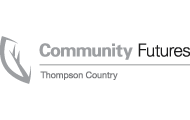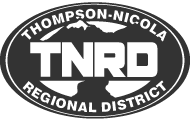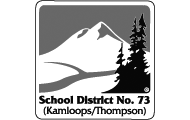We Work with Awesome People






The Fresh Inc. Brand and Online team will be presenting on brand consistency, web design and online marketing at the end of April to a large group with over an hour and a half of time to fill. Here are some tips and tricks we will be considering to make sure our presentation is engaging, educational and most of all fun!
If you want others to care about what you have to say, you first have to show them that you care.
Your presentation will be infinitely more inspiring, and your words will carry infinitely more weight, if the audience can actually feel your energy and excitement.
Moreover, if you’re speaking at an event, you have an obligation to the individuals who spent time and money to come to hear you speak. People don’t attend events to read slides, they come to learn and get inspired. And there’s nothing quite as disappointing as leaving a presentation with the feeling that you might as well just have downloaded the slide deck.
My friend Marcus Sheridan of The Sales Lion is one of my all time favorite speakers. He takes passion and excitement to a whole new level and gets so fired up during presentations that you simply can’t help but hang on his every word.
Check out this video excerpt from one of Marcus’ presentations, and you’ll know exactly what I mean.
People spend time and money to come and see you speak, and it’s pretty safe to assume that they want something in return. In my experience, the more concrete examples and takeaways you give your audience, the happier they will be with your presentation and overall performance.
Early in my career I learned that case studies with before/after examples from the real world really help give the audience that “Ah yeah, I totally get it!” experience.
Now I pack tons of case studies into my presentations. Even for a short 20-minute session I have about 15 case studies in my deck. Effectively this means that I can back up every single point I make with a concrete example of how it works in practice.
Moreover, I always try to give the audience as many insights and concrete takeaways as possible, so they leave with the feeling of having learned something that they can take straight back to the office an apply to their own business.
For an example of how to use case studies and concrete takeaways, check out the video below. It’s an excerpt from my session at the 2013 MarketingSherpa Email Summit, and in the clip I walk the audience through the process of writing high-converting call-to-action button copy.
In my experience, reading aloud from a manuscript is the number one deadly sin of public speaking. It instantly kills your stage presence and makes it next to impossible to establish a real connection with the audience.
From an audience perspective, watching someone read an entire presentation from a piece of paper while clinging to the pulpit for dear life is nothing short of excruciating.
By freeing yourself from the manuscript, you can focus on interacting with the audience. You can move around on stage, use gestures and facial expressions, make eye contact with individual listeners, get down on the floor with the audience, gauge their reactions and get them involved in the presentation.
In other words, you can give the audience a killer speaker performance rather than a boring lecture.
There’s nothing wrong with writing a script and using it to build and structure your presentation, just don’t bring it on stage with you.
This one is kind of a cliché, but I do find that starting with a story is a great way of setting the scene and demanding attention from the moment you take the stage.
By “a story” I don’t mean the history of your company or a tedious narrative on why your subject matter is relevant.
A good opening story could simply be a short anecdote that helps you frame the subject matter and build rapport with your audience.
When I spoke at Conversion Summit 2013 in Frankfurt, I opened with a story about how I used to live in Germany as a child, and that I was actually considering doing the presentation in German – until I realized that I hadn’t spoken German in 20 years and that I only remembered useless words like “Vokuhila” (German slang for mullet).
This story turned out to be a great icebreaker that served several purposes:
– It made the audience laugh
– It made them pay attention right away
– It built rapport and helped bridge the gap between the German attendees and me
For an example of a well-executed opening story, watch Dr. Flint McGlaughlin, one of my all time favorite speakers, hit a home run with a funny, relevant anecdote from the real world.
There’s just something disarming and endearing about a person who can make you laugh. Vice versa, a person who tries to make you laugh but fails miserably is anything but endearing.
Unless you’re doing a comedy show per se, I would advise against throwing too many jokes into your presentation. Humor is an individual thing, and if your jokes miss the target, you’re likely to make your audience cringe rather than smile.
There’s nothing worse than the numbing silence of a conference room after a joke that totally missed the target – especially when it’s obvious that the speaker was expecting a hysterical reaction.
I recommend playing it safe and only throwing in a couple of jokes or anecdotes that are relevant to your subject matter and that the audience is very likely to respond to. If you get the opportunity to present the same material several times, you’ll be able to identify punch lines that work on most crowds and that have a relatively high success rate.
Making relevant jokes on your own expense is often a good and safe way of making people laugh. In my presentations I like to show case studies where my hypotheses were completely off. I use the opportunity to make fun of myself as the marketer that over-successful companies hire to help them sell less.
Under all circumstances you need to be ready to move on quickly and elegantly if your humor misses the target. Just keep on talking and don’t show the audience that you were surprised by the fact that they didn’t find you funny at all.
Getting up on stage to speak in front of 200 people (or even just 10) is an intimidating prospect for most people. Being nervous before a presentation is 100% normal. It doesn’t mean that you are a chicken or that you are going to choke, it just means you are human and that you care about doing a great presentation.
I’d even venture to say that if you don’t have any nerves before you go on stage, you don’t care enough about what your doing and it’s time to stop.
I’ve been doing presentations and public speaking for years and I still get nervous as hell before a gig. The trick is to use that nervousness constructively instead of letting it take over and cause you to panic or blank out.
I usually start feeling the adrenalin for real about an hour before I have to go on. Around this point I try to find a quiet spot where I can pace around and speak to myself without people thinking that I’m loosing it. Instead of trying to fight the adrenaline I welcome it and use it to get into a state of total readiness and excitement. I might even jump up and down a bit and throw a few hooks in the air.
I usually don’t rehearse my presentation front to back, because I don’t want to come off too rigid and rehearsed. Also I like to have some leeway to adapt to the energy and reactions of the audience.
However, I always practice the first 5 to 10 minutes in order to make sure that I’ll get off to a smooth start. As soon as I get through the introduction and the first slides I start to calm down and really get comfortable on stage.
“Show it – don’t tell it.” If you are awesome at what you do, your material will give you all the credibility you need. If your presentation sucks, it doesn’t matter if you represent the largest company in the world – people still won’t think higher of you.
Years ago when I didn’t have much experience, I spent a lot of energy (and slides) introducing myself and building my credibility. Today, I hardly do any talking about who I am and what my background is – it’s simply not that relevant. My work speaks for itself and I find that going straight to “showing it” has much more impact than spending time “telling it”.
This one should be a no-brainer, but I see tons of speakers dive headfirst into this pitfall again and again. Unless you’re specifically hired to do a sales pitch, just don’t do it man.
Concentrate on delivering an awesome presentation performance and let people decide for themselves if they want to hear more about your services. The fact is that people attend events and conferences to learn and get inspired – not to sit through a series of hour-long sales pitches.
I my experience it’s kind of a karma thing; the more you give away for free, the more you’ll get in return. I get leads from almost every presentation I do – without doing any direct selling what so ever.
There are tons of people out there who can give you tons of advice on how to do presentations. Take whatever you find useful, and don’t let others impose rules on you that cramp your style.
At business school I was indoctrinated with a commonly-accepted-as-best-practice set of rules for doing presentations. The best thing I ever did was to unlearn those rules.
The truth is that you need to find out what works for you, and the best way of doing that is by getting hands-on experience. The more time you spend on stage speaking in front of real audiences, the more confident you’ll become, and the easier it will be to develop your own style.






Made in Canada - © 2024 Fresh Brand Marketing - All Rights Reserved.